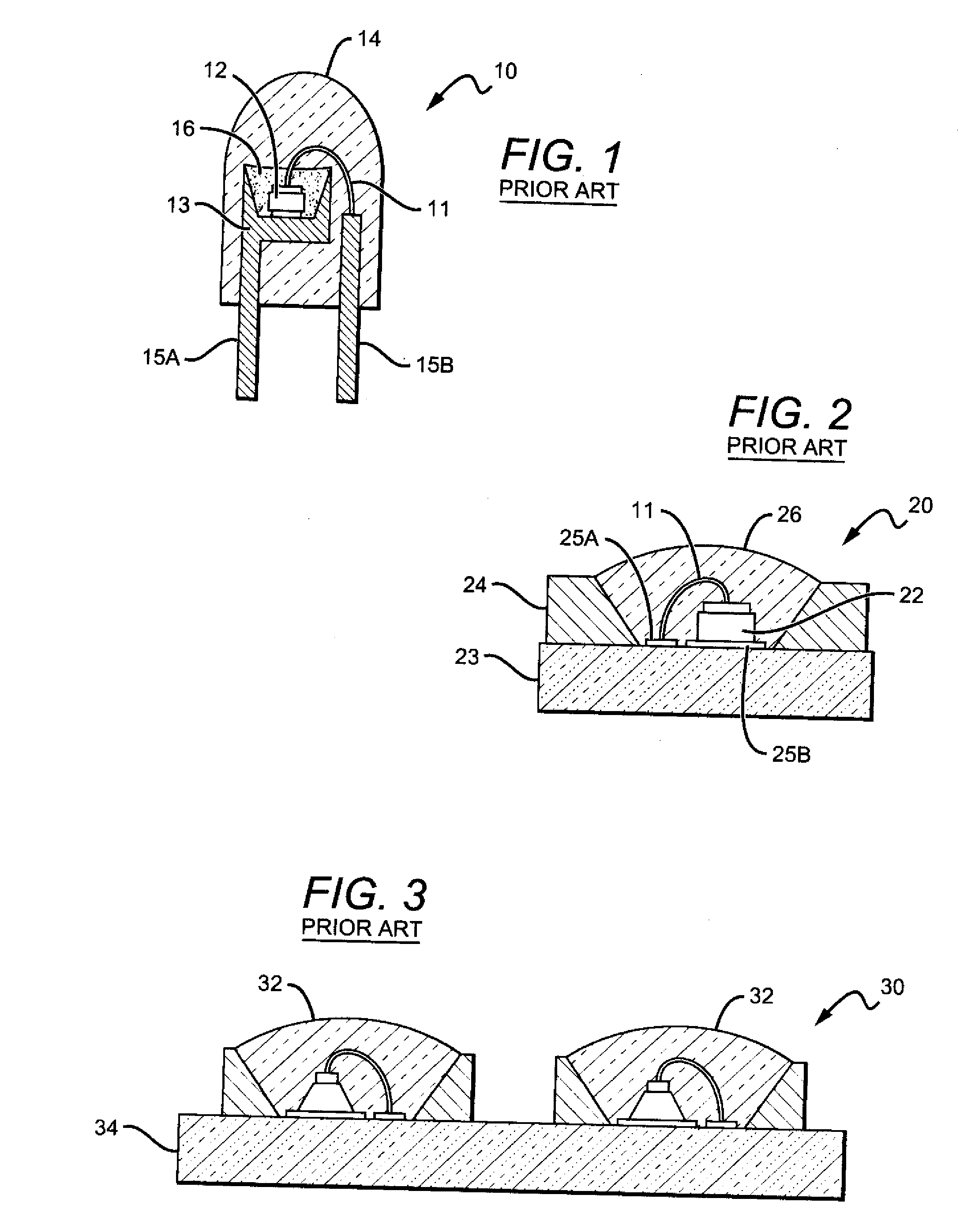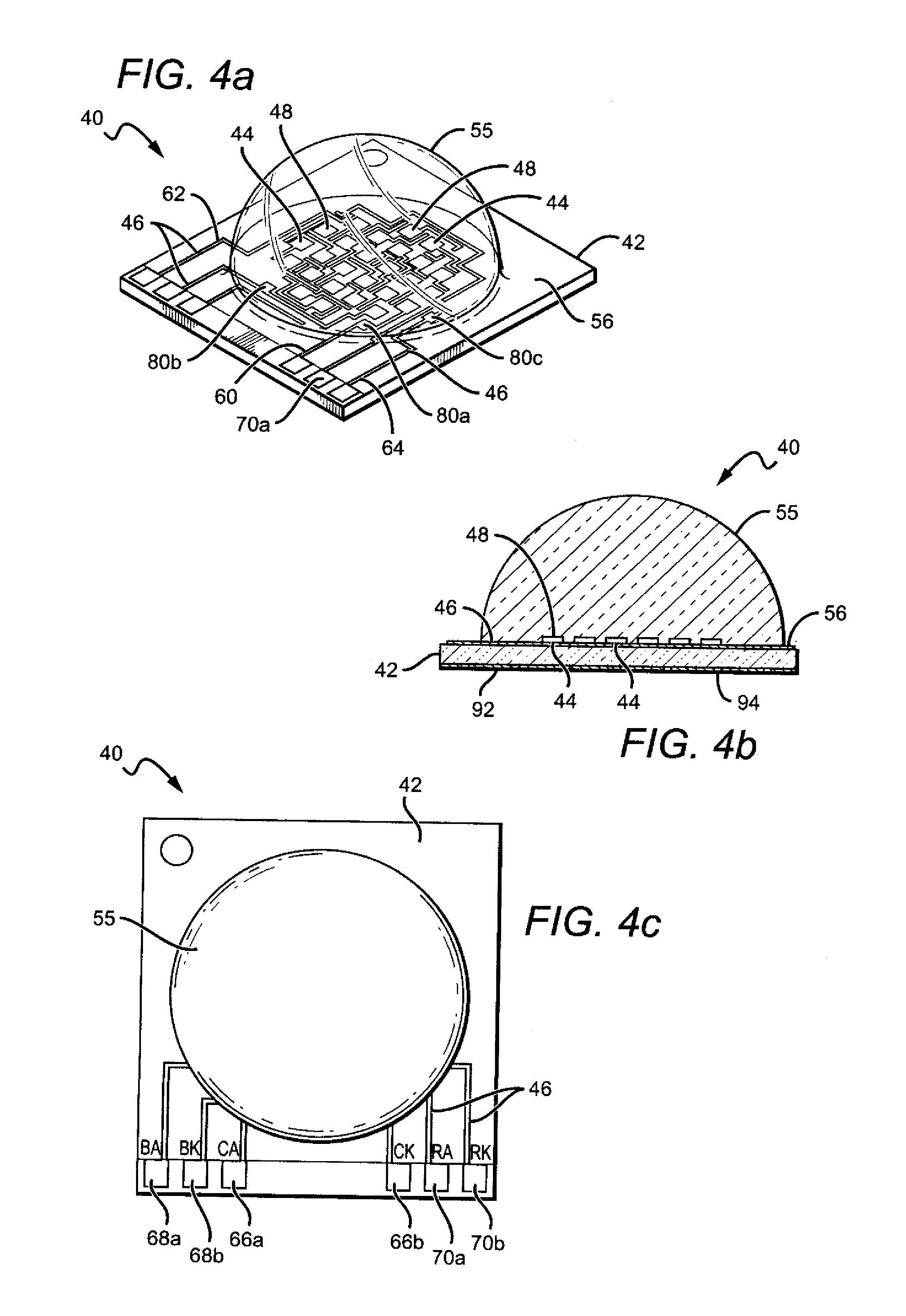Array layout for color mixing
a color mixing and array technology, applied in the field of solid state lighting, can solve the problems of heat retention, difficult mixing, and loss of optical properties when light is reflected
- Summary
- Abstract
- Description
- Claims
- Application Information
AI Technical Summary
Benefits of technology
Problems solved by technology
Method used
Image
Examples
Embodiment Construction
[0031]The present invention comprises a solid state lighting component, lamp or luminaire having a plurality or array of discrete light sources comprising groups of light sources emitting at different colors of light. The present invention is described with reference to the LED components utilizing LEDs or LED chips, but it is understood that lighting components according to the present invention can utilize different light sources including other solid state light sources.
[0032]LED components according to the present invention illuminate the array of LED chips to emit a color combination of light from the LED chips. In one embodiment an LED component emits a white light combination or mixture of light from its LED chips. The configuration of the particular LED chips in the array can contribute to the ability to mix in the near field and in particular for specular reflector systems, in the far field. Random placement of the LED chips in the array can reduce natural color mixing from...
PUM
 Login to View More
Login to View More Abstract
Description
Claims
Application Information
 Login to View More
Login to View More - R&D
- Intellectual Property
- Life Sciences
- Materials
- Tech Scout
- Unparalleled Data Quality
- Higher Quality Content
- 60% Fewer Hallucinations
Browse by: Latest US Patents, China's latest patents, Technical Efficacy Thesaurus, Application Domain, Technology Topic, Popular Technical Reports.
© 2025 PatSnap. All rights reserved.Legal|Privacy policy|Modern Slavery Act Transparency Statement|Sitemap|About US| Contact US: help@patsnap.com



